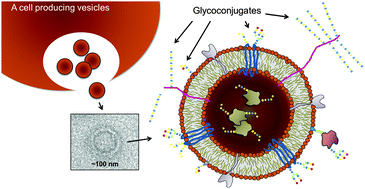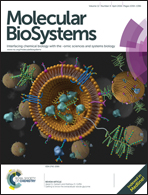Getting to know the extracellular vesicle glycome
Abstract
Extracellular vesicles (EVs) are a diverse population of complex biological particles with diameters ranging from approximately 20 to 1000 nm. Tremendous interest in EVs has been generated following a number of recent, high-profile reports describing their potential utility in diagnostic, prognostic, drug delivery, and therapeutic roles. Subpopulations, such as exosomes, are now known to directly participate in cell–cell communication and direct material transfer. Glycomics, the ‘omic’ portion of the glycobiology field, has only begun to catalog the surface oligosaccharide and polysaccharide structures and also the carbohydrate-binding proteins found on and inside EVs. The EV glycome undoubtedly contains vital clues essential to better understanding the function, biogenesis, release and transfer of vesicles, however getting at this information is technically challenging and made even more so because of the small physical size of the vesicles and the typically minute yield from physiological-scale biological samples. Vesicle micro-heterogeneity which may be related to specific vesicle origins and functions presents a further challenge. A number of primary studies carried out over the past decade have turned up specific and valuable clues regarding the composition and roles of glycan structures and also glycan binding proteins involved EV biogenesis and transfer. This review explores some of the major EV glycobiological research carried out to date and discusses the potential implications of these findings across the life sciences.


 Please wait while we load your content...
Please wait while we load your content...